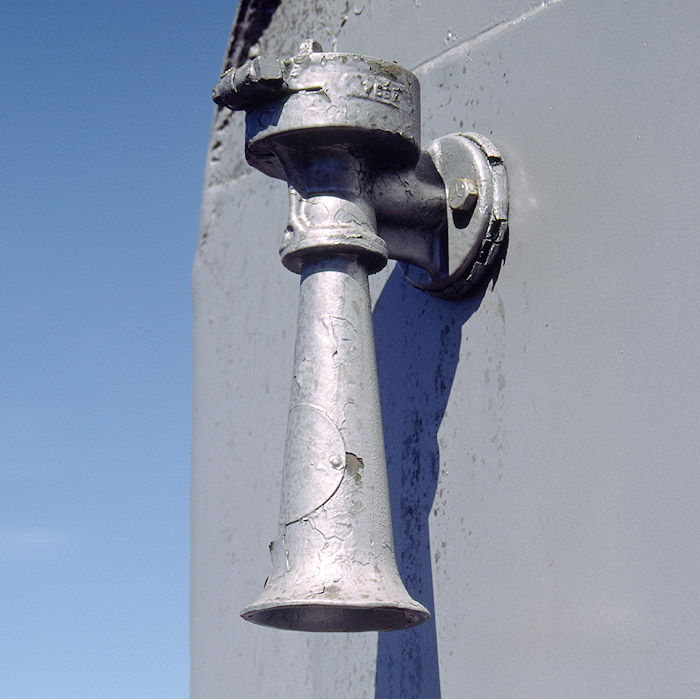Leslie A-75 | |
|---|---|
 | |
Leslie's nomenclature for its Tyfon horns was complex and varied over time. The horn shown above was at one time designated the A-75-L, indicating that it was designed to be blown on air, had a 75 mm diameter diaphragm, and had the "low pitch" bell that measured 16 and 11/16th inches in length. There would also be additional letters on the end of the designation indicating the materials from which the diaphragm and the horn itself were made.
In later years, the horn was redesignated the A-75-330, with the final number giving the horn's fundamental frequency in Hertz. As before, a pair of letters following the last number indicated the diaphragm material (M for metal, P for plastic, or R for rubber faced) and the metal used to cast the horn (A for aluminum, B for bronze).
| |
Factory tuning for the A-75-330 was: E | |
Probably the most common railroad application of the A-75 was as the hostling horn on cabless "booster" locomotives (B-units). Frequently these locomotives had small control stands near a porthole to allow a hostler to move them by themselves around an engine terminal. The A-75 horn, often positioned on one end pointing downward as illustrated above on an EMD F7B, provided warning to unsuspecting people on the ground that a locomotive without a cab was moving by itself.
As B-units fell out of favor in the 1950's, so did the use of the A-75. Some boosters preserved in museums still have their A-75's, but opportunities to actually hear them are infrequent.
| |